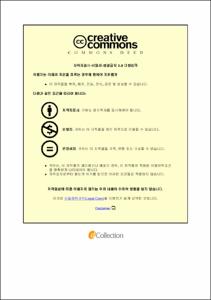타이 코트 조성에 따른 방오도료와의 접착 특성 연구
- Alternative Title
- Study on adhesion properties of Anti-fouling coating by varying the composition of tie-coat
- Abstract
- Hull condition for merchant ship is a key parameter in deciding the fuel efficiency of the ship. The application of anti fouling paints results in a smooth hull devoid of any marine fouling, which decreases the frictional resistance caused by the water flow and the anti-fouling paints have been identifying to decrease the load on the engine and increase fuel efficiency through the specified evaluation method.
With time, marine fouling and sea condition roughens the hull surface of the ship. As the frictional resistance caused by the water flow over the hull increases, the engine has to consume more fuel to overcome this resistance which adds on to the normal fuel consumption of the ship.
Ships while sailing or on the berth are always contacted with seawater and seawater contains several marine organisms which enter the ship along with the seawater and deposit and flourish on the parts of the ship’s system. If preventive measures are not taken, the marine growth can cause to increase the load of ship and in case of serious, damage to the particular part in the long run.
Because of these reasons, Anti-fouling is demanded on the hull area of the merchant ships and the process of removing or preventing the accumulation of marine organisms from the surface of hull and the paint used for this application is called anti fouling paint.
Anti-fouling paints that continuously release one or more biocides through the paint surface have been the primary method of anti-fouling prevention on ships and other marine vessels for more than a century.
Anti-fouling systems can be defined as the coating, paint, and surface treatment used on a solid (e.g., ship hull) to control or prevent the attachment of unwanted organisms. The main components of these compositions are biocides, which slowly “leached out” into the seawater, killing barnacles and other marine life that have attached to the solid surface.
Antifouling paints which are commonly used in the industry can be categorized largely as:
Fouling release coating ; Traditional fouling release coatings consist of a silicone elastomer (PDMS) and rely on a low surface tension (hydrophobic) and a low modulus of elasticity, usually with a good initial foul free performance. With time, the coatings ability to self-clean is lowered, which results in a higher hull skin friction.
Self-polishing coating ; Traditional SPC (Self-polishing coating) consist of acrylate coplymer based generally and sorted by the polishing rate to apply on the diverse vessels types. The paint is started to react with seawater and the biocides release into seawater and the paint film disappear over time. These coatings need continuous motion such as hydrating or hydrolysis reaction with seawater and they can be used in multi-season but there are many parameters which give the effect to the reaction speed.
In the paper, the quoted Anti-fouling paint is acrylate copolymer based Self-polishing coating and consider the causes on the specific phenomenon commonly taken place on the specific coating system which is typically used in the marine business area. There are some cases which is anti-fouling paint is not performed well as expected such as earlier polished through or physical polished caused by peeled off from the other coat. It is not surprising that adhesion failure of anti-fouling is a common defect during the sailing.
The main agenda in the paper is to see how various changes in the tie-coat affect the adhesion of anti-fouling paint and focused to confirm what factors affect the adhesion properties of the interface through the specific analysis.
Only one anti-foluing paint which is acrylate copolymer based is used for the study and the tie-coats are used after manufactured with the different raw materials which can give the effect to the adhesion property. Adhesion property for each specimen is evaluated in the dry condition firstly and then try again after the immersion testing. Especially the contact angle is evaluated according to the different particle size of the extenders and it can be analyzed the existence of thermoplastic hydrocarbon resin from the immersion condition.
These are confirmed as main causes to make adhesion failure with long-term sailing condition.
- Issued Date
- 2020
- Awarded Date
- 2020. 8
- Type
- Dissertation
- Keyword
- adhesion tie-coat anti-fouling
- Publisher
- 부경대학교
- Alternative Author(s)
- Hyunsu Kim
- Affiliation
- 부경대학교 산업대학원
- Department
- 산업대학원 응용화학공학과
- Advisor
- 문명준
- Table Of Contents
- 1. 서 론 1
2. 이론적 배경 및 문헌 조사 3
2.1. 해양 생물에 의한 오염과 방오도료 3
2.2. 일반적인 선체 도장 사양과 타이 코트 13
2.2.1. 일반적인 선체 도장 사양 13
2.2.2. 타이 코트 14
2.3. 접착 강도 17
2.3.1. 소지에 대한 습윤성 17
2.3.2. 표면 및 계면 장력 18
2.3.3. 습윤성과 접촉각 20
3. 실 험 22
3.1. 실험 재료 22
3.2. 전처리, 도료 제조 및 도장 25
3.2.1. 전처리 25
3.2.2. 도료 제조 26
3.2.3. 도장 31
4. 결과 및 고찰 33
4.1. 체질 안료 입자 크기에 따른 부착영향 평가 33
4.1.1. 체질 안료 입자 크기에 따른 접촉각의 변화 33
4.1.2. 부착력 시험 평가 35
4.2. EVA resin 상태에 따른 부착영향 평가 38
4.2.1. SEM & FT-IR 분석 38
4.2.2. 부착력 시험 평가 41
4.3. 열가소성 탄화수소 수지 유무에 따른 부착영향 평가 43
4.3.1. FT-IR 분석 43
4.3.2. UV Spectroscopy 분석 46
4.3.3. 부착력 시험 평가 51
5. 결론 53
참고문헌 56
- Degree
- Master
- Files in This Item:
-
-
Download
 타이 코트 조성에 따른 방오도료와의 접착 특성 연구.pdf
기타 데이터 / 2.76 MB / Adobe PDF
타이 코트 조성에 따른 방오도료와의 접착 특성 연구.pdf
기타 데이터 / 2.76 MB / Adobe PDF
-
Items in Repository are protected by copyright, with all rights reserved, unless otherwise indicated.